
Choosing new radiators for your home renovation or property development project can be overwhelming with so many options available. There are a range of styles, colours, and room-specific radiators to choose from. We provide tips on selecting the best radiator for your home, whether you need kitchen radiators, bathroom radiators, or a radiator for every room. Read on or use our quick options to find the information you need.
When it comes to heating your home, the size of your radiator plays a critical role in the efficiency and effectiveness of your heating system. A radiator that is too small may struggle to heat a large room, while a radiator that is too large may waste energy and money.
In this article, we’ll provide a comprehensive guide on how to choose the right size radiator for your home, covering everything from room size and layout to energy efficiency and cost. By following these guidelines, you can choose a radiator that meets your specific needs and requirements.
6 tips to choosing the right radiator for your home
Choosing the right size radiator is an important decision that can impact the efficiency and effectiveness of your heating system. A radiator that is too small may struggle to heat a large room, while a radiator that is too large may waste energy and money. Key things to consider are room size and layout, heat output and style of radiator.
Consider the room size and purpose
When choosing a radiator for your home, it’s essential to consider the size and purpose of the room. For example, larger rooms require radiators with higher BTU output to ensure adequate heating, while smaller rooms can make do with smaller radiators. Similarly, bathrooms and kitchens require radiators with higher output due to the presence of moisture and cooking, respectively. Also, you may want to consider the style and design of the radiator to fit the decor and theme of the room.
Choose the right type of radiator
There are several types of radiators available in the UK, including standard convector radiators, column radiators, and towel radiators. Column radiators have become increasingly popular for their aesthetic appeal, while towel radiators are ideal for bathrooms. Standard convector radiators remain a popular choice due to their affordability and energy efficiency.
Decide on the material
Radiators in the UK come in a variety of materials, including steel, cast iron, and aluminium. Steel radiators are a popular choice for their affordability, while cast iron radiators are known for their durability and aesthetic appeal. Aluminium radiators are ideal for energy-efficient homes as they heat up quickly and retain heat for longer.
Check for energy efficiency
Energy-efficient radiators are an essential consideration for homeowners in the UK, especially with the increasing focus on sustainability and reducing carbon footprint. Radiators with higher energy efficiency ratings, such as A-rated radiators, are more efficient and cost-effective in the long run.
Look for additional features
Additional features such as thermostats, timers, and smart controls can make your radiator more convenient and energy-efficient. For example, a radiator with a thermostat will automatically turn off when the desired temperature is reached, reducing energy consumption.
Consider installation and maintenance
Finally, it’s important to consider the installation and maintenance of your radiator. Some radiators, such as electric radiators, are easier to install and require minimal maintenance, while others, such as gas powered central heating radiators, require professional installation and regular servicing.
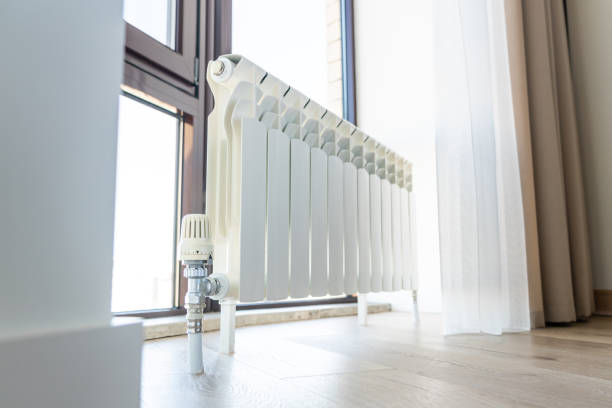
Key considerations when choosing a radiator
Choosing the right size radiator for your home is an important decision that can impact the efficiency and effectiveness of your heating system. Here are some key considerations to keep in mind when selecting the right size radiator for your home:
Room size and layout
The size of your room and the layout of your home will impact the size of the radiator you need. Larger rooms will require larger radiators to effectively heat the space, while smaller rooms may only need a smaller radiator.
For example, if you have a large living room with high ceilings, you will likely need a larger radiator to effectively heat the space. On the other hand, a small bathroom may only need a smaller radiator.
Additionally, the layout of your home will impact the placement of your radiators and how well they can heat the space. If your home has an open floor plan, for example, you may need larger radiators to heat the space effectively.
Heat output
The heat output of a radiator is measured in British Thermal Units (BTUs) per hour. To determine the heat output you need, you’ll need to consider the size of your room, the type of fuel you’re using (e.g., gas, oil, electric), and the insulation in your home.
For example, if you have a large room with good insulation, you may only need a radiator with a lower heat output. On the other hand, if you have a small room with poor insulation, you will likely need a radiator with a higher heat output to effectively heat the space.
A professional heating contractor can help you calculate the heat output you need based on these factors.
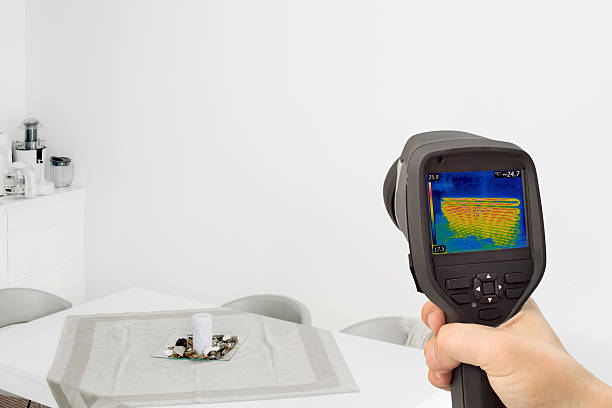
Type of radiator
There are several types of radiators available, including panel radiators, column radiators, and towel radiators. Each type has its own unique characteristics and benefits, so it’s important to choose one that is suitable for your needs.
Panel radiators, for example, are a popular choice for their versatility and affordability. They are typically made of thin, flat panels that can be easily mounted on a wall or under a window.
Column radiators offer a more traditional look and are well-suited for large spaces. They are made of vertical columns that can be used to heat multiple rooms at once.
Towel radiators, as the name suggests, are designed to heat towels as well as the room. They are typically used in bathrooms and are a good choice if you want to add some extra warmth and comfort to your space.
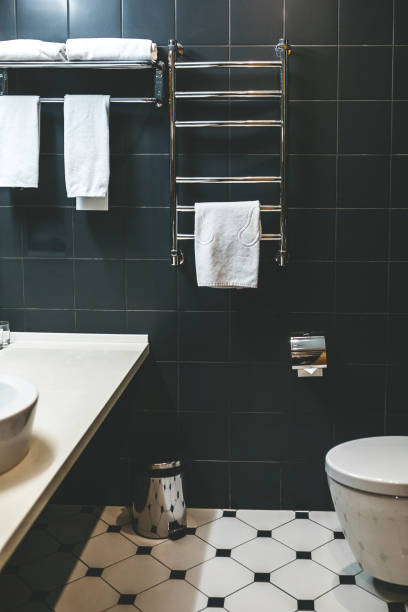
Style and design
Radiators come in a range of styles and designs to suit different tastes and decor styles. Consider the overall look and feel of your home when selecting a radiator, as well as the size and placement of the radiator in the room.
For example, if you have a modern, minimalist home, you may want to choose a sleek and simple radiator that won’t distract from the overall design.
On the other hand, if you have a traditional, Victorian-style home, you may want to choose a more ornate radiator with intricate details and finishes.
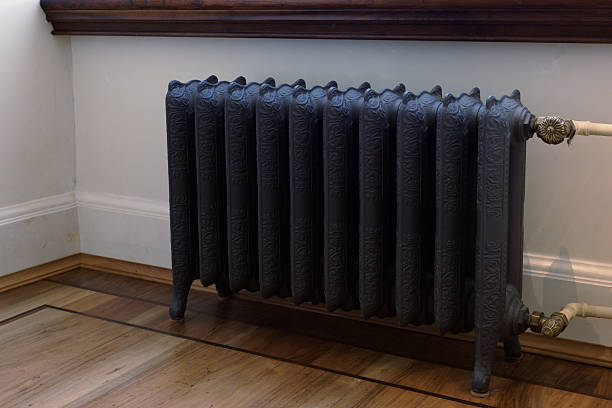
Cost
The cost of a radiator can vary significantly depending on the size, type, and material. Be sure to consider your budget when choosing a radiator and shop around to find the best deal. Radiators made of high-quality materials, such as stainless steel or cast iron, tend to be more expensive than those made of cheaper materials, such as aluminium or plastic.
Maintenance and repair
Radiators will require regular maintenance and cleaning to ensure they are working properly and efficiently. Consider the maintenance and repair costs of different radiators before making a decision.
For example, radiators made of cast iron or stainless steel may require less maintenance and repair than those made of aluminium or plastic, which may be more prone to wear and tear.
Energy efficiency
The energy efficiency of a radiator can impact your energy bills and the environmental impact of your heating system. Look for radiators with high energy efficiency ratings, such as those with low water content and good insulation. Radiators with low water content have less water inside them, which means they can heat up faster and more efficiently.
Good insulation helps to keep heat inside the radiator, reducing the amount of energy needed to maintain a consistent temperature. Energy efficient radiators can also help to reduce your carbon footprint and save you money on energy costs in the long run.
Other considerations when choosing a radiator
Here are some other considerations to keep in mind when choosing a radiator:
- Colour: Radiators come in a range of colours to match different decor styles and preferences. While white is the most common colour, you can also find radiators in a variety of shades, including black, silver, and even gold.
- Noise level: Some radiators can be noisy when in operation, which can be a nuisance if they are located in a bedroom or living room. Look for radiators that are designed to be quiet or choose a location for your radiator that is farther away from areas where noise might be an issue.
- Warranty: Be sure to check the warranty offered by the manufacturer of the radiator you are considering. A good warranty can provide peace of mind and protect you in case of any issues with your radiator.
By considering these factors, you can choose a radiator that meets your specific needs and preferences.
Fitting a radiator
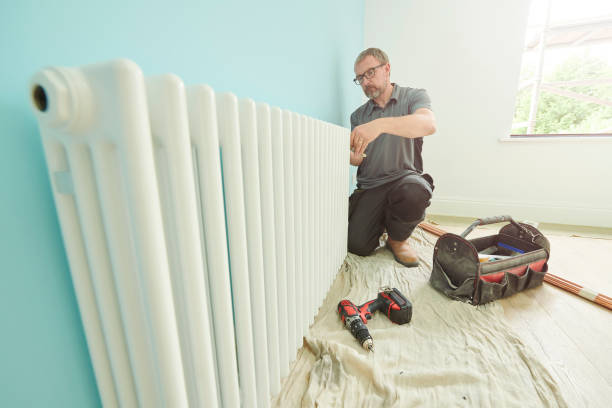
There are several tools that you may need to install a radiator, depending on the specific type of radiator and the installation process. Here are some common accessories that you may need:
- Brackets: Most radiators will need to be mounted on the wall using brackets. The type of brackets you need will depend on the size and weight of the radiator, as well as the type of wall it will be mounted on (e.g., brick, drywall).
- Valves: Radiators typically need valves to control the flow of hot water or steam through the radiator. The type of valve you need will depend on the type of fuel you are using (e.g., gas, oil, electric) and the type of radiator you have.
- Thermostat: A thermostat can be used to control the temperature of a room by regulating the flow of hot water or steam through the radiator. There are several types of thermostats available, including manual and programmable options.
- Pipe covers: If you are installing a radiator that requires new pipes to be run through the walls or floor, you may need pipe covers to protect and conceal the pipes. Pipe covers come in a range of styles and finishes to match different decor styles.
- Pipe insulation: Insulating the pipes that run to and from your radiator can help to improve the efficiency of your heating system by reducing heat loss. Pipe insulation is typically made of foam or fiberglass and is available in different sizes to fit different pipe diameters.
It is a good idea to check with the manufacturer of the radiator you are installing or consult a professional to determine the specific tools you will need.
Read related articles:
- Home Radiator Maintenance For Beginners
- DIY Guide To Fix Radiators Not Working In Your Home
- Radiator Installation Tips
*The information in this article should be used for general guidance only and not as financial or health advice. Full details are on the link in the footer to our disclaimer page. Always discuss your requirements with a competent and suitably qualified professional before undertaking any work.
